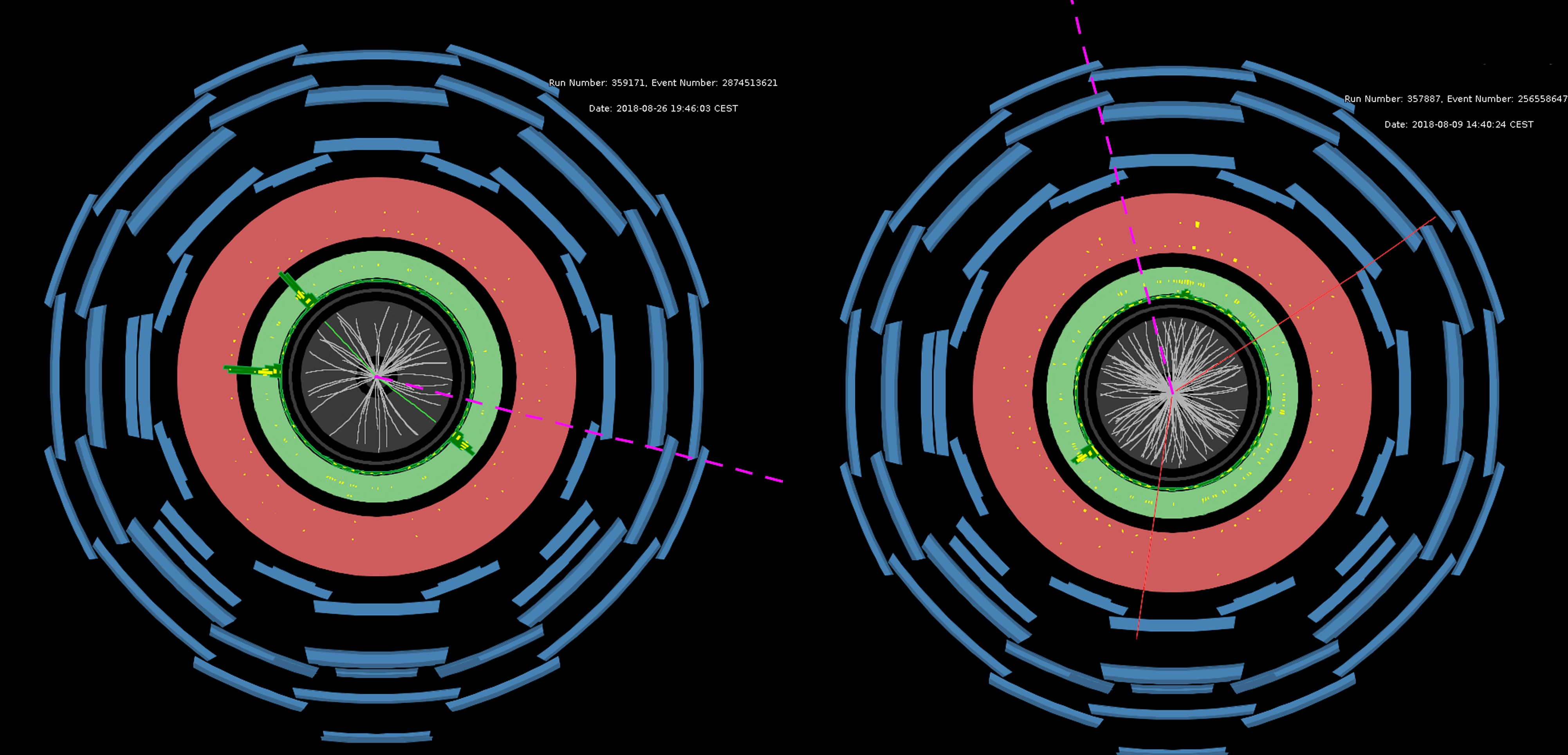Using the Higgs boson to search for dark photons
15 September 2022 | By
The search for new physics is one of the key goals of the ATLAS Collaboration. With the discovery of the Higgs boson in 2012, the Standard Model gained an essential ingredient towards the understanding of fundamental particles and their interactions – but it can not yet be considered complete. The nature of dark matter, which constitutes about 27% of the Universe, remains a major open question. Dark matter might be part of a complex “dark sector” of particles beyond the Standard Model, with its own internal symmetry structure and interactions. Among these “dark particles”, the “dark photon” is a predicted mediator particle for interactions in this new sector. If dark photons interact with Standard Model particles, they could be produced in high-energy proton-proton collisions at the LHC and be detected by the ATLAS experiment.

The ATLAS Collaboration has been looking for signs of dark photons in data collected by the experiment during LHC Run 2 (2015-2018). Their newest search targets, for the first time in ATLAS, the production of a Higgs boson in association with a Z boson, with subsequent decay of the Higgs into a photon and a dark photon.
A dark photon would not leave any visible signals in the ATLAS detector, as it is predicted to interact extremely weakly with Standard Model particles. Nevertheless, it would manifest itself in the form of an imbalance in the total energy in the transverse plane of the detector (the missing transverse energy). For their new search, physicists selected collision events with two leptons (originating from the Z-boson decay), one photon and missing transverse energy. Several Standard Model processes can give rise to a similar signature; these were modelled as precisely as possible using simulations and data-driven estimates.
In addition, researchers used a machine learning technique (Boosted Decision Tree, BDT) to discriminate between events that are more likely from a dark photon (classified with a high BDT score) from those originating from Standard Model processes (classified with lower BDT score). If a dark photon were produced, it would be observed as an excess of events with high BDT score, with respect to the ones expected from Standard Model processes. Physicists looked for dark photons with a wide range of possible masses, ranging from massless to 40 GeV. No excess was observed. This allowed researchers to set exclusion limits on the rate at which the Higgs boson decays into a photon and a dark photon: the results show that the maximum allowed rate ranges from 2.3% for a massless dark photon to up to 2.5% for the other considered masses.
The ATLAS Collaboration has set the best exclusion limits at the LHC on the search for Higgs bosons decaying to a photon and dark photon.
Similar results were obtained by a previously published analysis, looking for the same Higgs-boson decay, but in a different Higgs production mode (Vector Boson Fusion, characterised by a higher cross-section). This second analysis excluded decays of the Higgs boson to massless dark photons at rates higher than 1.8%. The data were also used to set strong constraints on scenarios with additional Higgs-like bosons that decay in the same way.

In conclusion, the ATLAS Collaboration has set the best exclusion limits at the LHC on the search for Higgs bosons decaying to a photon and dark photon. These remarkable results were made possible due to the excellent performance of the ATLAS experiment during Run 2 of the LHC, and thanks to highly sophisticated and precise data analysis techniques developed by ATLAS members. The results, together with those from other accelerators or astrophysics experiments, are of great interest to theorists to validate their models and improve their predictions. ATLAS researchers are looking forward to the larger dataset expected from LHC Run 3, which will allow them to make more precise measurements.
Learn more
- Search for dark photons from Higgs boson decays via ZH production with a photon plus missing transverse momentum signature from proton-proton collisions at 13 TeV with the ATLAS detector (ATLAS-CONF-2022-064)
- Observation of electroweak production of two jets in association with an isolated photon and missing transverse momentum, and search for a Higgs boson decaying into invisible particles at 13 TeV with the ATLAS detector (Eur. Phys. J. C 82 (2022) 105, arXiv: 2109.00925, see figures)
- Higgs Hunting 2022 presentation by Yuan-Tang Chou: BSM and rare H(125) decays in the ATLAS experiment
- See also the full lists of ATLAS Conference Notes and ATLAS Physics Papers.




